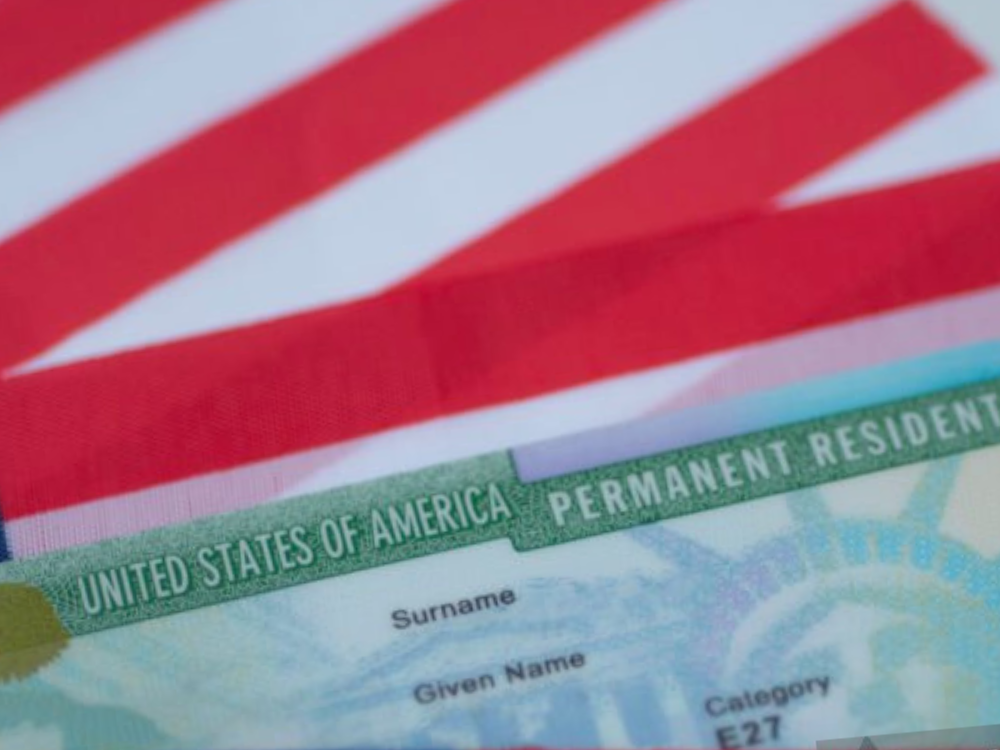Traveling with a green card for the first time can be both exciting and nerve-wracking. As a newly minted permanent resident, navigating international travel comes with its own set of rules and considerations. Understanding these requirements is crucial to ensure a smooth journey and hassle-free re-entry into the United States.
This article aims to provide essential advice for those embarking on their first trip abroad as green card holders. It will cover key topics such as necessary documentation, time restrictions on travel, and the importance of maintaining ties to the U.S. By following these guidelines, green card holders can travel confidently, knowing they’re well-prepared for their international adventure.
Essential Documents for Green Card Holders

When traveling with a green card for the first time, it’s crucial to have the right documents on hand. These essential papers ensure a smooth journey and hassle-free re-entry into the United States.
Passport
Green card holders need to present a valid passport from their country of citizenship or a refugee travel document when leaving the United States. This document is necessary for international travel and serves as the primary form of identification in foreign countries.
Valid Green Card
The most important document for re-entering the United States is a valid, unexpired Form I-551, commonly known as the “Green Card“. This card proves the holder’s status as a permanent resident and is essential for readmission after temporary travel abroad. Green card holders should keep this document with them throughout their trip.
In addition to the green card, travelers may present other identifying documents such as a U.S. driver’s license or a foreign national I.D. These supplementary documents can help facilitate the re-entry process.
Reentry Permit
For those planning extended trips, a reentry permit is highly recommended. This document is particularly important in two scenarios:
- When the absence from the United States is expected to last one year or more.
- If there’s a possibility that the trip might be interpreted as abandoning U.S. permanent residence.
To obtain a reentry permit, green card holders need to file Form I-131, Application for Travel Document, before departing the United States. It’s advisable to submit this application well in advance of the planned trip, ideally at least 60 days before the intended travel date.
The reentry permit serves several purposes:
- It prevents the Permanent Resident Card from becoming technically invalid for re-entry after an absence of one year or more.
- It helps establish that the holder did not intend to abandon their permanent resident status.
- It allows for admission to the United States after travel abroad for up to two years without needing a returning resident visa.
It’s important to note that reentry permits cannot be extended. If a permit expires, a new application must be submitted. Additionally, for security reasons, a new reentry permit won’t be issued to someone who already possesses a valid one.
By ensuring they have these essential documents – a valid passport, green card, and reentry permit when necessary – first-time travelers with green cards can embark on their international journeys with confidence and peace of mind.
Understanding Travel Time Limits

For green card holders, understanding travel time limits is crucial to maintain their permanent resident status. These limits are based on the concept of continuous residence, which involves maintaining a permanent dwelling place in the United States over a specific period.
Six-Month Rule
Trips abroad that last less than six months generally do not disrupt the continuous residence requirement . This means green card holders can freely travel for short periods without jeopardizing their status. However, it’s important to note that even these shorter trips should not give the impression of abandoning U.S. residency.
One-Year Rule
An absence from the United States for a continuous period of one year or more (365 days or more) will automatically break the continuity of residence. This rule applies whether the absence occurs before or after filing a naturalization application. To avoid this, green card holders planning extended trips should consider applying for a reentry permit.
A reentry permit allows a permanent resident to remain outside the United States for up to two years without losing their status. To obtain this permit, one must file Form I-131 (Application for Travel Document) before departing the U.S.. It’s crucial to apply for this permit while physically present in the United States.
Continuous Residence Requirement
The continuous residence requirement is a key factor in maintaining permanent resident status and eligibility for naturalization. Here’s a breakdown of how different lengths of absence affect this requirement:
- Absences of 6 months or less: These do not disrupt continuous residence.
- Absences between 6 months and 1 year: These are presumed to break continuous residence, but this presumption can be overcome with evidence.
- Absences of 1 year or more: These automatically break continuous residence.
| Duration of Absence | Impact on Continuous Residence | Eligible to Naturalize? |
|---|---|---|
| 6 months or less | No presumption of break | Yes |
| 6 months to 1 year | Presumed break (can overcome) | Yes, with evidence |
| 1 year or more | Automatic break | No |
It’s important for green card holders to be aware that remaining outside the U.S. for extended periods may lead to questions about their intent to maintain permanent residency. Customs and Border Protection officers may scrutinize longer absences and could potentially revoke permanent resident status if they believe the individual no longer intends to live permanently in the United States.
Maintaining Ties to the United States

U.S. Employment
For green card holders, maintaining employment ties to the United States is crucial. Working remotely for a U.S.-based company while abroad can have legal and tax implications. Employers may require employees to be on paid time off when traveling outside the country unless they have official permission to work in that location. It’s important to be mindful of time zone differences, cultural adjustments, and potential challenges when considering remote work options.
Property Ownership
Green card holders have the same property rights as U.S. citizens and can purchase, sell, and own real estate. Buying a home is an excellent way to establish roots in the U.S. and build wealth for the future. Various mortgage options are available, including Federal Housing Administration (FHA) loans, which often have lower credit score requirements and down payment options. Additionally, green card holders can participate in government-backed mortgage programs and may qualify for VA loans if they meet service requirements.
Tax Filing
As lawful permanent residents, green card holders have specific tax obligations. They are required to file U.S. income tax returns and report worldwide income to the Internal Revenue Service (IRS). This includes income earned both within and outside the United States, such as employment income, self-employment income, retirement income, and investment income. Green card holders must file taxes similarly to U.S. citizens, either by mail or electronically.
It’s crucial to maintain tax compliance to avoid serious consequences, including penalties, interest, loss of immigration benefits, and difficulty renewing the green card. Green card holders should be aware of potential double taxation issues and may need to file taxes in both their country of residence and the United States. To address this, the U.S. has tax treaties with some countries, providing relief from double taxation and offering other benefits.
Conclusion
Traveling with a green card for the first time has a significant impact on one’s journey and requires careful planning. Having the right documents, understanding travel time limits, and keeping strong ties to the U.S. are key to a smooth trip and hassle-free re-entry. By following these guidelines, green card holders can embark on their international adventures with confidence and peace of mind.
To wrap up, it’s crucial to remember that maintaining permanent resident status involves more than just having the right paperwork. It’s about showing a genuine intention to make the U.S. your home. This means keeping up with your U.S. employment, property ownership, and tax obligations even when you’re abroad. By staying on top of these responsibilities, you’ll not only protect your green card status but also set yourself up for a successful and enriching life in the United States.
FAQs
What are the first steps after receiving a green card?
Once you receive your green card, it's advisable to apply for a new Social Security card. This update allows the Social Security Administration to reflect your new immigration status and issue a card without work restrictions.
What documents do green card holders need for international travel?
Green card holders should carry their passport from their country of citizenship and their valid green card. Depending on the destination, other documents might be required, so it's important to check the entry requirements of the country you are visiting.
Can you explain the 6-month rule for green card holders?
The 6-month rule states that leaving the U.S. for more than six months but less than one year can disrupt the continuity of your residency. This could affect your eligibility for future citizenship if not properly managed.
What is the maximum duration a green card holder can travel abroad without jeopardizing their status?
Green card holders can travel abroad for up to one year without needing a re-entry permit. If the absence is longer, a re-entry permit or a Returning Resident (SB-1) visa may be required to maintain lawful permanent resident status.
How can I maintain my green card status while traveling frequently?
To avoid jeopardizing your green card status, keep trips outside the U.S. shorter than six months. If longer trips are necessary, maintaining ties such as property ownership, employment, or family in the U.S. can help demonstrate your intention to return and reside in the U.S.
What happens if I stay outside the U.S. for more than a year?
Staying outside the U.S. for more than one year without a re-entry permit can lead to questions about your permanent resident status upon your return. It's crucial to apply for a re-entry permit if you plan to be abroad for longer periods to avoid complications at the border.
Is it possible to lose green card status due to prolonged absence from the U.S.?
Yes, prolonged absence can be interpreted as abandonment of your residency. To prevent this, maintain substantial ties to the U.S. and consider applying for a re-entry permit if you expect to be away for more than one year.
What should I do if I am asked to relinquish my green card at the port of entry?
If asked to sign Form I-407 to relinquish your green card, remember that this is voluntary. You have the right to refuse and request a hearing before an immigration judge to review your case.
Can I travel back to the U.S. after a long absence with an expired green card?
Re-entering the U.S. with an expired green card after a long absence is risky. You might be allowed entry at the discretion of the immigration officer, but it's advisable to renew your green card or apply for a re-entry permit before traveling.

